
In a bold move towards inclusive and equitable education, the Equitable Education Fund (EEF) Thailand, in partnership with the Office of the Basic Education Commission (OBEC), convened a nationwide workshop to accelerate the rollout of the “1-School-3-Models” model. Designed to combat dropout and support re-enrolment by tailoring learning to diverse student contexts, the initiative now offers multiple alternative pathways, each crafted to meet local challenges and individual needs. Bringing together over 1,146 schools—represented by principals, teachers, and area administrators—this vibrant gathering marked a turning point in translating policy into practice across all OBEC-affiliated institutions.
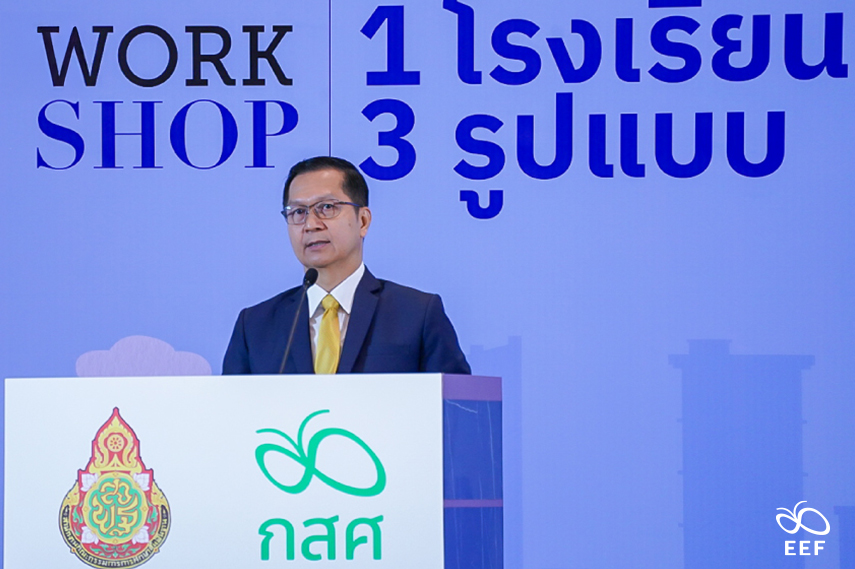
Opening the event, Mr. Patthana Patthanathaweedon, Deputy Secretary-General of the OBEC, expressed gratitude to education leaders for driving the model’s expansion beyond pilot sites. Now integrated nationwide, the “1-School-3-Models” model enables schools to offer formal, non-formal, and informal education tailored to each learner’s reality—through flexible class times, diverse teaching methods, and adaptive assessments designed to reduce dropout risks. “The essence of the ‘1-School-3-Models’ model,” he affirmed, “is learner-centered education—tailored to each student’s challenges, needs, and potential—so every child receives an education truly suited to them.” With a goal of establishing at least one flexible school in every district, the OBEC is turning equity from aspiration into action. “Addressing school dropouts isn’t just about returning children to classrooms,” the Deputy Secretary-General stressed. “It’s about creating flexible learning that fits their real-life circumstances and keeps pace with a rapidly changing world.” Regardless of limitations or life burdens, no longer inevitable is leaving the educational system; swung open now to every child are real, personalized pathways.
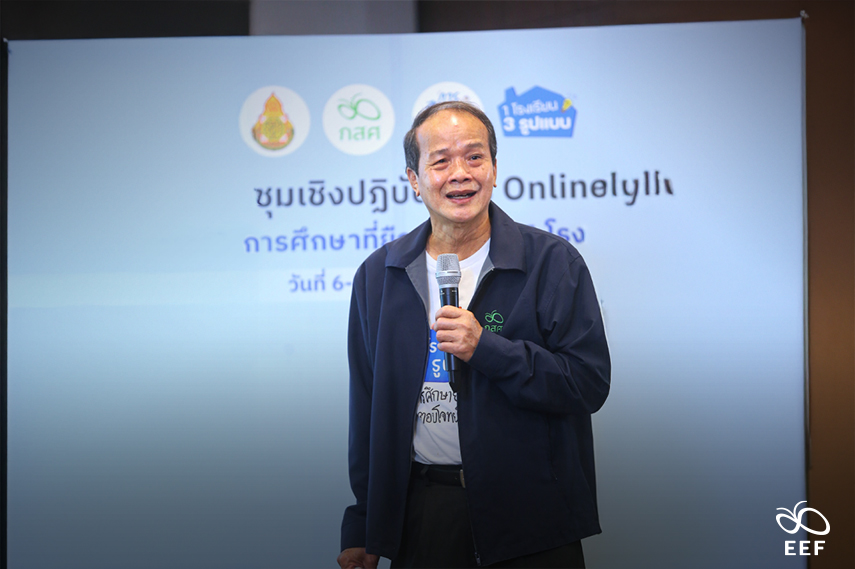
Building on this momentum, Professor Dr. Sompong Jitradap, consultant to the EEF Executive Committee, highlighted the transformative potential of flexible education rooted in real-life experience. When teachers co-design learning pathways with students, education shifts from prescription to personalization, empowering learners and making progress meaningful. Grounded in the 2017 Constitution and the 1999 National Education Act, this approach marks a decisive move away from the rigidity of traditional schooling. “For vulnerable children,” he cautioned, “if we insist on forcing them back into the rigid, conventional system, they may disappear from it once again.” A flexible model must be nurturing and responsive to the lives of students burdened by work, caregiving, or instability. “Some children may carry work burdens and cannot attend school every day, so schools must develop approaches that support their lives while keeping them within the educational system,” added the EEF executive committee consultant. In recognizing and adapting to these lived realities, the educational system becomes not only more equitable, but truly inclusive.
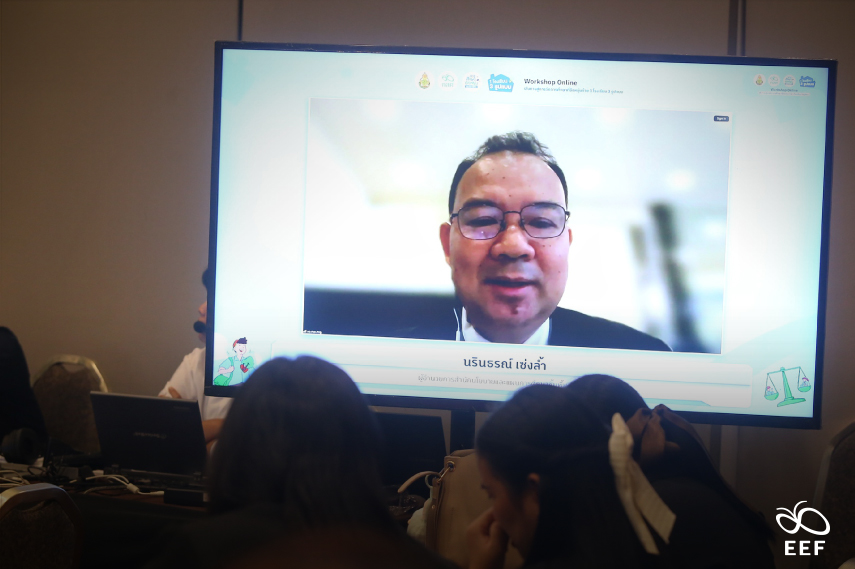
At the policy level, this vision is taking concrete shape. Mr. Narintorn Senglum, Director of the Office of Policy and Basic Education Planning under the OBEC, affirmed Thailand’s readiness: “Thailand now possesses a legal and systemic framework that supports the design of personalized learning.” In recognition of students’ diverse needs and regional contexts, the OBEC is working closely with schools to ensure effective implementation. “At present,” he noted, “54 OBEC-affiliated schools across 16 educational inspection zones have been designated as model institutions, while additional 1,146 schools have voluntarily applied to develop and implement flexible learning models.” Crucially, under existing education laws, all 29,152 OBEC schools are legally empowered to adopt this approach, advancing a shared goal, as the Director emphasized, “of reintegrating out-of-school and marginalized children into the educational system.”
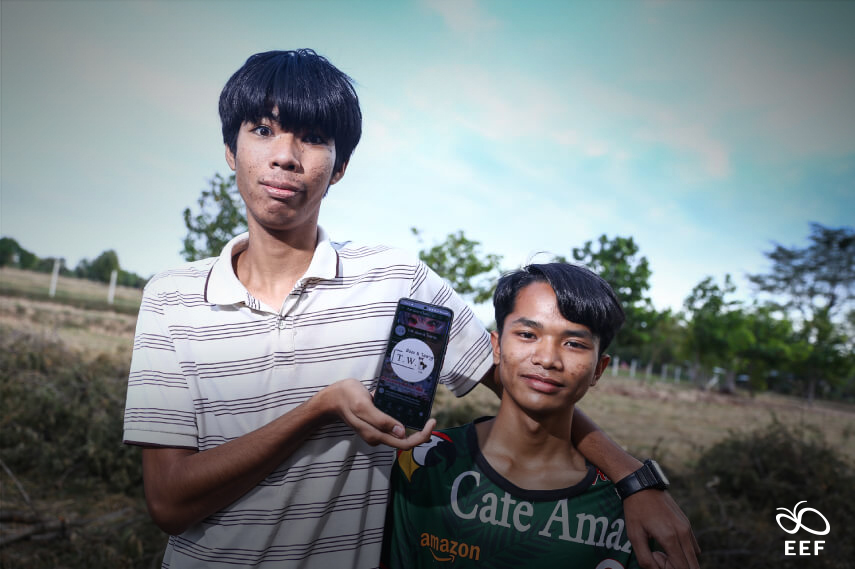
As the 2025 academic year begins, children across Thailand are encountering a redefined understanding of “learning”—one that extends beyond the four walls of the classroom and adapts to the complex realities of students’ lives. Recognizing that many learners juggle both school and livelihood responsibilities, the model calls on schools to adopt flexible approaches that validate and support these real-life challenges rather than penalize them. To make this vision truly inclusive, it is backed by targeted social and financial measures. Among these, emergency financial support from the EEF—ranging from 2,000 to 4,000 Thai Baht depending on the student’s level—is helping to ease the pressure on families and ensure no child is left behind.
Now codified as a standard guideline for all OBEC schools, the “1-School-3-Models” model represents a comprehensive reform rooted in the lived experiences of children, particularly those at the margins. Encompassing formal, non-formal, and informal learning, and reinforced by Articles 12 and 15 of the 1999 National Education Act, the model signals a paradigm shift. By advancing the Thailand Zero Dropout policy and backing it with personalized design and targeted investment, the OBEC and the EEF are reaffirming a powerful truth: only when education adapts to life—not the other way around—can we ensure that no child is left behind.
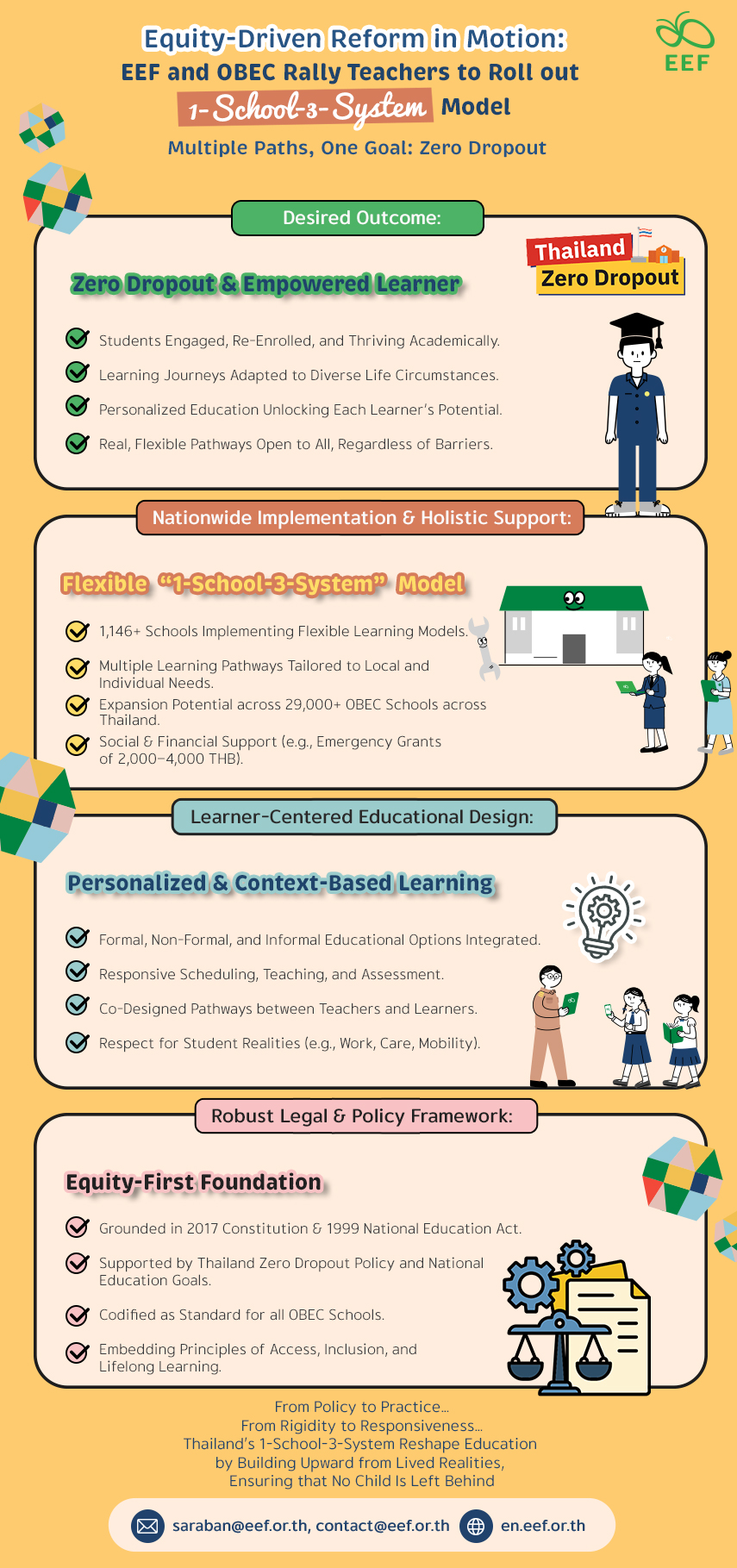
The nationwide implementation of the “1-School-3-Models” model marks a tangible step forward in realizing the Equitable Education Fund (EEF)’s Flexible Learning vision—now a central pathway in advancing the Thailand Zero Dropout policy. Rooted in the belief that education must respond to real-life contexts, this movement redefines access by adapting learning to fit students’ circumstances rather than forcing students to conform to rigid systems. Backed by legal frameworks and national commitment, the model is being brought to life in over a thousand schools, creating learner-centered environments that accommodate diverse challenges, from caregiving and work obligations to geographic and economic constraints.
This systemic transformation is grounded in four strategic pillars: 1. identifying out-of-school children through cross-agency data integration; 2. delivering targeted, inter-agency support that addresses not only educational but also health and family needs; 3. providing high-quality, flexible learning tailored to each child’s potential; and 4. encouraging private sector engagement through the “Learn to Earn” initiative for youth aged 15–18, which bridges education and vocational opportunity. In turning flexibility into national policy and inclusion into daily practice, Thailand is making education not just accessible, but equitable and meaningful.
All For Education is all about people; only when all is in for education is Education For All. Join the movement to reduce educational inequality. Support the EEF by donating to fund research, partnerships, and assistance for children, youth, and adults in need of educational support. Click the link to contribute today and help create a society where education is open and equal for all. Together, we can make a lasting impact.

